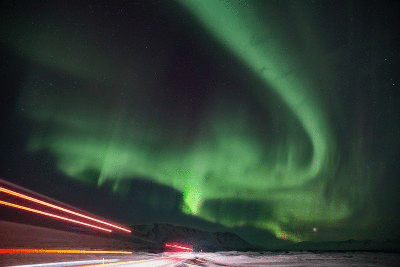It goes without saying, Iceland is a beautiful place with an endless diversity of landscape and scenes to photograph. Ten days wasn’t enough to capture everything I wanted to capture. Without a doubt, I’ll be going back to Iceland. In fact, I’m going to give the following disclaimer: Everyone should go to Iceland, not just once, but at least twice. You should visit Iceland when there is snow on the ground, and then go again when there is moss on the ground. There is nowhere else on earth like it, and if you plan right, you won’t regret visiting. The landscape is only half of it. During my time there I met some of the most fun and interesting people I’ve happened upon while traveling. They really know how to party while talking about topics ranging from globalization to climate change. Also, from a food and beverage perspective, Reykjavik is nirvana. Almost all the food I had was delicious, including the Minke whale (not endangered at all), and they have a surprisingly strong and diverse microbrew scene (I recommend the Lava Stout). I highly recommend Íslenski Barinn (Icelandic Bar) for their beer selection and food.

That being said, during my ten days in the land of fire and ice, I was challenged both photographically and meteorologically — That is, at several points the weather was terrible if not frightening. This posed a number of logistical challenges, like staying on the road during 50mph winds and trying to photograph the aurora on overcast nights with no change of weather in sight.
However, this is part of the excitement and challenge of Iceland! After my experiences during those ten days, I feel like a better, more competent photographer — not necessarily from a technical standpoint — but from the standpoint of planning, logistics, and adaptation.
Which leads me to my five lessons for wintery Iceland. These are five things I recommend everyone visiting Iceland in the winter do to make the most of their experience and photos. Some of these things I did from the beginning, and took for granted, but some of these lessons I learned the hard way. This list isn’t exhaustive, but for me they’re the five main points I want to tell everyone visiting Iceland between November and April.
 1. Rent a four-wheel drive vehicle.
1. Rent a four-wheel drive vehicle.
Snow, ice, rain, wind, and dark. All these things work against you, especially if you’re driving far from Reykjavik. I started my journey in a two-wheel drive Chevy Opel. This was a bad idea. I got stuck twice, and had to rely on the kindness of strangers to get me out (there’s plenty of this type of kindness in Iceland). If you plan on going far, even on the ring road, you’re much safer in a 4WD vehicle. Not to mention, you can drive at normal speeds more often with 4WD, rather than inching along hoping to stay on the road. Even with 4WD, there were times that me and my travel companion felt we were in dire straights. At one point we faced a complete white out, couldn’t see the reflective pylons, and ended up driving partially off the road (4WD got us out). The crazy thing was that the skies were completely clear (we could see the stars). The problem was the wind, blowing an insane amount of snow across the road, completely blinding us. This leads me to my second lesson:
2. Travel with a friend (and cell phone).
All I can say, is that the weather is very unpredictable and having a friend along makes the experience much more enjoyable, especially in those moments of doubt. Just as important, is a working cell phone. GPS and emergency calling are two things you’ll need if you get stuck. It’s dark 18 hours a day and towns/cars are very far in between, so if you get stuck somewhere, you’ll likely be waiting a long time if you don’t have a phone. Also, you’re much more likely to be adventurous if you have a friend along to make sure you make it back to civilization in one piece!
 3. Do go off on your own, don’t rely on tours to show you the best that Iceland has to offer.
3. Do go off on your own, don’t rely on tours to show you the best that Iceland has to offer.
Bad weather shouldn’t stop you. You just need to plan for it. If you have a good car, a friend, and a cell phone, you should get out there and see the country for yourself. Check the weather warnings and heed them closely (e.g. If the forecast says winds of 150kph, don’t go out). However, sticking with a tour bus severely limits your ability to see some of the most interesting sights in the way that Iceland intended them to be seen: In solitude. The cathartic nature of viewing the aurora while hearing nothing but the wind blowing, is greatly diminished by the swarms of tourists that stick to the busses. With your own vehicle and plans, you’ll be able to see and photograph things that the less adventurous don’t get to see.
 4. Talk to the Icelanders. Get advice along the way.
4. Talk to the Icelanders. Get advice along the way.
There’s no substitute for the experience of those who have spent significant time living in Iceland. In an ideal world, I would have spent weeks or months traveling the island, making multiple attempts to capture images, mainly because there are so many ways to get the shot and so many times that weather gets in the way. However, since long term travel is not a practical reality for most people, the quickest shortcut is to get the advice of locals. They often know when to go out, what is most scenic, and what spot to photograph from. Tour books don’t really convey this information. In Reykjavik, they also know the beset places to eat/drink, and how best to experience the night life. In short, make friends in Iceland! They also make great models, which helped me to do a number of photoshoots, which I will show images from in my next Iceland post.
5. Most importantly, spend more time than less and be flexible to leave room for weather situations.
I think my main take away is that if there’s an image you really want to capture, then plan on needing more than one day to get it. There are times I got really lucky and everything came together okay (cloud cover, wind, northern lights activity, etc.), but there are other times where I was left twiddling my thumbs in a snow storm hoping for something to work out. You often cannot plan for the weather more than a few hours in advance, and you shouldn’t underestimate the desire to spend more time in one place. If you book too many things and have too many hotels lined up, then you’re going to constrain yourself and limit your experience (and feel rushed). Sometimes you can’t, or shouldn’t, rush the trip. It’s better to take your time driving, and savoring the moment. Not to mention, in the low season it’s really easy to finding lodging accommodations that same day using Kayak or TripAdvisor (one more very important reason to have a working cell phone).
And now, the photos. I placed these generally in chronological order, starting off from my last post in Snæfellsnes, heading to Jökulsárlón and Vatnajökull (located about 5 hours from Reykjavik), and finishing with images of the aurora at Thingvellir.
The drive from Reykjavik to Jökulsárlón/Vatnajökull






Jökulsárlón and the Northern Lights. Jökulsárlón is a glacier lagoon formed from the icebergs that break off from this outlet tongue of Vatnajökull, the largest icecap in Europe. The icebergs float out of the lagoon to sea, washing back ashore as the waves and tide bring them in.




Jökulsárlón’s beach and icebergs the next morning.


This ice cave was formed by a natural glacial river flowing beneath Breiðamerkurjökull, and outlet glacier that’s part of Vatnajökull, the largest glacier in Europe. Based on the rate that Breiðamerkurjökull has been receding, this particular ice cave will most likely not exist past next summer.


The aurora blooms at Thingvellier, located about one hour north of Reykjavik. It’s a great spot for capturing aurora images because of it’s lack of light pollution and close proximity to the city. These were captured on my last night in Iceland, and I was lucky that the weather and aurora was favorable that day.


Other photos along the way.
















































































